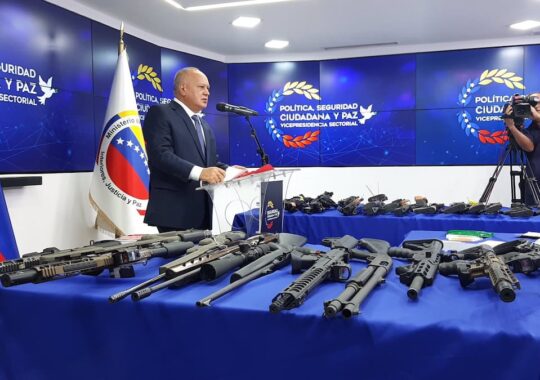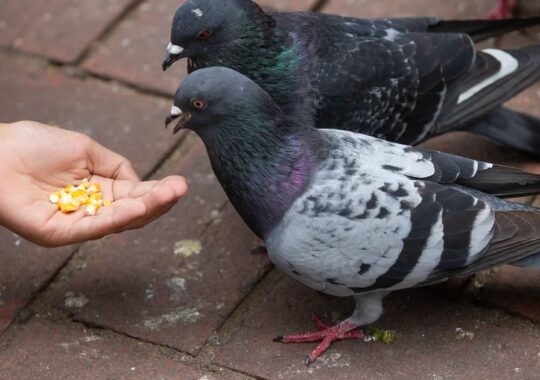Today, there are 3 million additional education programs for children throughout the country – these are clubs and sections where they can develop their abilities. And schools now have career guidance lessons, which are also aimed at identifying interests. The press center of Moskovsky Komsomolets held a briefing on the topic “Career guidance, additional education for schoolchildren, psychological assistance to parents and children.”
From September 1, 2023, on Thursdays, career guidance lessons are held in all schools for schoolchildren in grades 6–11. In addition, classes are held for children in additional education institutions – there they can more deeply develop their abilities in a specific area. To make the right choice, school teachers and psychologists can help parents and children.
In which class should I choose?
Today, there is still a debate among experts about when is a teenager able to consciously choose a profession? From what grade can children be divided into specialized areas?
“In the modern world, people grow up late,” says Vitaly Altukhov, methodologist of the “Ticket to the Future” project, director of research and development at Profilum LLC. — The realization of what they want to do often comes not even at the end of school, but after completing their professional education. However, at school, the division into profiles takes place in grades 7-8, when an understanding of the world and what I want to do in this world appears. Therefore, high school is a very fertile area for career guidance, and the age of high school is suitable for dividing into professional areas. It’s important to decide after 9th grade, when you choose your level of education—college or university.”
What contributes to early self-determination? “Parents greatly influence their children’s choices,” says Liliya Ziborova, Deputy Managing Director for Operations and Partnerships at the Humanitarian Projects Foundation. — Some people suggest, guided by the information field, what is trending now, others advise their profession, thinking that everyone knows it and will be able to help. But parents cannot know everything about modern and in-demand professions. They don’t need it. Therefore, we also work with families to tell them about professions and work opportunities in the region. For example, there is a free online course “Parent in the Topic” to help you navigate a variety of professions. It will help you understand how to guide and where to not interfere with the child’s choice.”
“Within the framework of a unified model of career guidance and the “Ticket to the Future” project, children from the 6th grade can try themselves at universities, colleges, and enterprises in various professions,” continues Anastasia Kalugina, curator of the professional minimum of the Humanitarian Projects Foundation. — The guys’ feedback is very positive. Moreover, negative experience is also useful; it provides a vector for further development. Starting from the 8th grade, children can begin to master their first profession in colleges in parallel with their studies at school and, upon leaving school, receive not only a certificate, but also a document about the profession.”
Experts note that recently employers have been very willing to cooperate with schools in the framework of career guidance.
“This year we have a huge number of applications from enterprises to participate in career guidance activities with schoolchildren,” says Ziborova. — There is competition for motivated and qualified personnel. There are specialties that the country needs. But children need to be taught to make conscious choices. No one wants, having invested in the training of a specialist, to lose students at a college or university, or an employer to lose an employee in production.”
Large-scale system of additional education
Today they are increasingly talking about an individual learning trajectory, when a child can choose which subjects and areas of knowledge to pay more attention to.
“This approach depends on the school’s resources,” says Altukhov. “And in this regard, it’s difficult for the school.” Its task is to provide basic training in all subjects. You can pay more attention to individual disciplines in specialized classes. But the format there is also tough. The problem of individual education is precisely solved through additional education. There you can gain interesting skills and competencies, and try yourself in different fields.”
Director of the All-Russian Center for the Development of Artistic Creativity and Humanitarian Technologies Oksana Goncharova recalled that the system of additional education is already 105 years old. In Soviet times, too, everyone went to circles and creative associations. It’s just that now the direction is taking on new forms.
“Currently, 18 million children are engaged in additional education,” says the teacher. — There are almost 3 million programs in operation. In the first place are areas that relate to areas such as entrepreneurship, financial literacy, ecology, nature protection, psychology, volunteering, and psychology. Almost half of children do this in additional education. Next come artistic creativity and sports – approximately the same number of children participate in them. The next most popular is the technical field, which in recent years has made a leap from 4% to 20% of children employed in it. Next comes the natural science focus. In last place is tourism and local history, which, unfortunately, is the most unpopular among children.”
Not only at school
They implement additional education programs both in regular secondary schools (44 thousand), and in creative centers, universities, and private organizations (89 thousand only licensed ones). There are programs for children with disabilities. “Over the past three years, more than a million equipped places for additional education have been created in the regions. All this shows the availability of additional education in our country,” Goncharova emphasizes. The state has also set a task for every school to have a theater, choir, sports club, and media center. After all, all this not only develops, but also educates children.
In small schools in small towns and rural areas, “Growth Points” are opening – these are equipped spaces for children to study. They were conceived to revive interest in technology and engineering professions.
“The kids are happy to go to classes,” shares Yulia Kapalkina, head of the “Growth Point” school in the village of Zelenchugskaya in Karachay-Cherkessia. “We ourselves were surprised how interested the children were in the extra hour of career guidance.” There were fears that many would ask for time off and leave. But that didn’t happen. For example, my class became interested in aircraft manufacturing, and the guys asked to tell us more about the profession. That is, the children themselves suggest what interests them. At the “Ticket to the Future” program, they will learn what is relevant and what is yet to come in terms of professions.”
Schoolchildren are very curious. “At first they want to try everything, and then they quickly figure out what they want to do,” continues Kapalkina. – But the decision may change. Some of my students were planning to go into medicine. But in 11th grade I got into the “Projectory” project, ended up on the IT track and couldn’t leave. As a result, he entered the Faculty of Computational Mathematics and Cybernetics Moscow State University”
How can I find out what clubs are available in a particular city or rural area?
“On State Services, parents can get information about the entire range of programs in their region, choose and enroll their child, including using social certificates,” Goncharova clarifies.
An important task is personnel training. Additional education teachers are not necessarily teachers; they are often individual teachers. If there is a specialist in some field who wants to work with children, he must first take advanced training courses. A new profile of training in universities and colleges has also appeared – teacher of additional education. Students of pedagogical universities can already work with children.
How to find out what exactly is suitable for a child, what should he do in order to more fully develop his abilities?
“There are diagnostics within the career guidance model. Children can look at the environments that are recommended, this is a guide,” advises Liliya Ziborova.
Experts also recommend trying different clubs and areas to decide. You need to take advantage of all these opportunities and choose what suits you and study more deeply.
Why go to a psychologist?
Sometimes children can get help from psychologists in schools to help them figure out what’s right for them. But the functions of school psychologists are broader. They not only accompany the learning process, but also help teenagers cope with difficult, conflict situations in relationships with peers, teachers, and parents.
“Often specialists are faced with a reluctance to work with a psychologist, this may be due to stereotypes and characteristics of adolescence,” says Olga Ulyanina, head of the Federal Coordination Center for Providing Psychological Services in the Education System of the Russian Federation at the Moscow State Psychological and Pedagogical University. — It is important, when inviting a child to see a psychologist, to follow not the negative path (“Everything is bad in your studies,” “You cannot figure out relationships with your peers on your own”), but through the positive (“You have the opportunity to understand yourself better.” , “There is an opportunity to realize oneself, find friends”). Then the child will perceive the meeting with the psychologist with interest and readiness.”
Ulyanina identifies three groups of problems that teenagers can face: interaction with peers (bullying, cyberbullying), school success and overload from classes, high demands from teachers, the Unified State Exam, as well as everything related to the Internet and gadgets.
By the way, the right choice of classes in the field of additional education and a profile at school often also helps to cope with the listed problems.



